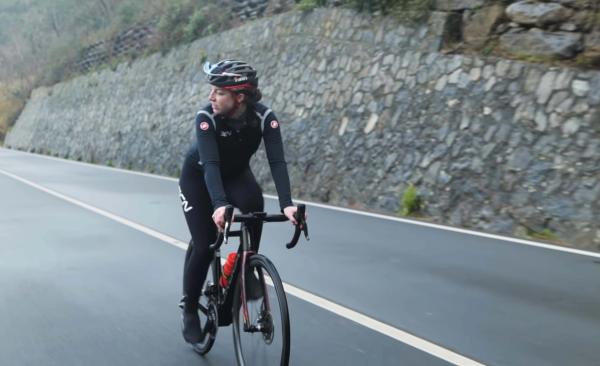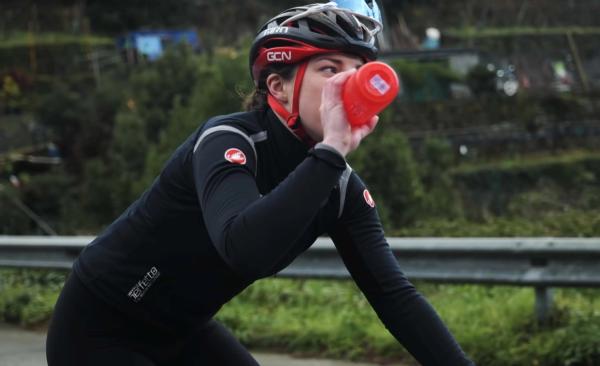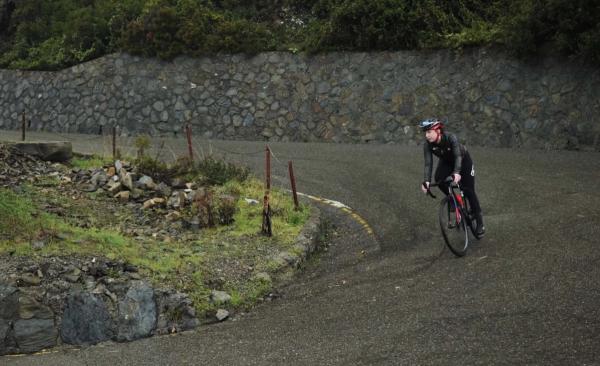Five basic cycling skills for beginners
The five most important things beginners should learn to have a safe and enjoyable ride
Tom Hallam-Gravells
Online Production Editor

Manon Lloyd
GCN Tech Presenter
The youngest, most successful and by far the coolest presenter
What is most important to learn as a beginner cyclist?
It can seem like there are a million and one things to learn when you get into cycling, but really, there are only a handful of skills you need to have a safe and enjoyable time. These five skills will boost your bike handling, confidence and safety on the bike, and each one should only take a few minutes to master.
Get to grips with these skills, and your first few rides are going to be a whole lot more fun.
Other helpful articles if you are just learning to ride your bike:

Look behind while riding
This is a really important one for road safety. There are so many reasons you’d need to check who’s behind you, whether you’re preparing for a junction, getting ready to stop, or parallel parking… OK, that last one was a joke, but trust us – this skill is super important.
The main thing to focus on is being able to turn around without accidentally drifting across the road. If you twist your body to look behind, it affects your steering, so it’s easy to stray across the road.
To dial this skill in, head to a quiet car park or an area without traffic. First of all, practise the motion of turning your head while standing still. Sit on your bike, with your hands on your hoods and, of course, one or both feet on the floor for balance.
Look straight, then just take your chin to your shoulder and back again. Make sure that your core and shoulders stay in the same position – if you keep your body straight, the bike will keep going straight too.
Once you've practised that, it’s time to give it a try while riding along. Get up to a speed you feel comfortable with, and make sure you've got enough room either side of you in case you drift. Then, follow exactly the same steps as you did when you were static. And remember, the goal is a quick glance – once you’ve got a glimpse of the road behind to assess what’s going on, turn back and look where you’re going.

Riding one-handed
Having the ability to take one hand off the bars when riding is liberating. It’ll allow you to eat and drink while cycling, to indicate to other road users, and to point out obstacles to other cyclists. And of course, it’ll allow you to show that close passing vehicle just what you think of their driving.
To master this skill, you need to be going at a good speed. The slower you go, the less stable your bike is, so ride along at a normal pace. Once you’re rolling, take one hand off the bar for a few seconds, then put it back on. Keep doing that, alternating between hands, until you feel confident. Next, try to bring each hand off for a bit longer, and further away from the bars.
Once you’re happy with that, it’s time to start trying a bit of multitasking. Try reaching down to your bottle, putting your hand in your back pocket, or giving other cyclists a wave. With practice, you’ll feel almost as confident riding with one hand as you do with two. Soon enough, you’ll be eating, drinking and gesticulating all day long.

Cornering
If the sight of a twisty road fills you with dread, you need to put a bit of time into your cornering skills. Learning how to corner correctly is going to make you so much more confident on the bike, not to mention safer.
Our number one tip for cornering is to look up, and look where you want to go. That means spotting the exit of the corner, and focusing on it as you cruise around. It might be tempting to look at the hazards you’re trying to avoid, or even to look down at your front wheel. But keep your eyes on the exit, and your bike will follow.
Another thing to keep in mind is your pedal position. Getting this right is simple: you need the pedal on the inside of the corner to be up, and the one on the outside of the corner to be down. So right corner: right leg up, left leg down. And left corner: left leg up, right leg down.
We do this to make sure there’s enough clearance between your pedal and the floor. As your bike leans into a corner, you need to get the inside pedal up and out of the way, so it doesn’t touch the ground. If it does, it could throw you off. Nasty. So keep this tip in mind when the road gets twisty.

Riding out of the saddle
Getting up out of the saddle is a really important skill, but it can be tricky for new cyclists to get used to. Your bike can feel wobbly and unstable when you’re not supporting your weight on the saddle, but with practice this is going to become second nature.
This skill will allow you to get the maximum power out of your bike, which is great if you’re getting up a steep hill or sprinting. And during a long ride, it can give your bum a chance to recover after taking your weight.
To get the hang of riding out of the saddle, follow these steps. First of all, think about your hand position. You’re best off putting your hands on the hoods, as this is where you’ll have the most control. Alternatively, you can try this with your hands on the drops, but the low down position might be a little bit trickier to start off with. The main thing is that you don’t try this with your hands on the tops of the bars, as this is the least stable part of the bar to grip onto.
Once your hands are in a stable, comfortable position, shift down into a slightly harder gear – when you stand up on the saddle you're going to be putting more pressure on the pedals, so if you did stay in that same gear you might be spinning your legs a little bit too fast.
When your dominant foot comes to the top of the pedal stroke, stand up on the saddle and suspend your weight between your legs and your arms. Relax and let the bike sway underneath you as you pedal. Then, when you’re ready, sit back down and change back into a slightly lighter gear.

Change gear while stationary
It’s so easy to forget to change gear before you stop at a set of lights or a junction. And if you do, it can be damn difficult to get your bike moving again! This quick tip makes it easy to change into a different gear while you’re stationary, which should save you grinding away from traffic lights in a really hard gear.
There are two ways of doing this, and both of them require you to be clipped in, with at least one foot attached to the pedals. The first method is super simple. With one foot on the floor and the other clipped into your pedal, pick up the rear wheel from the saddle, spin the gears with your leg, and change gear with your right hand.
The second method is a touch more complicated, but slightly more elegant. While standing over your bike, one leg clipped in and the other on the floor, grab the front brake and push the bike forward, lifting the rear wheel off the ground. In this position, you can spin the gears and change gear with your right hand. Find the gear you need, put the bike down, and you’re good to go.
.jpg?w=600&auto=format)








